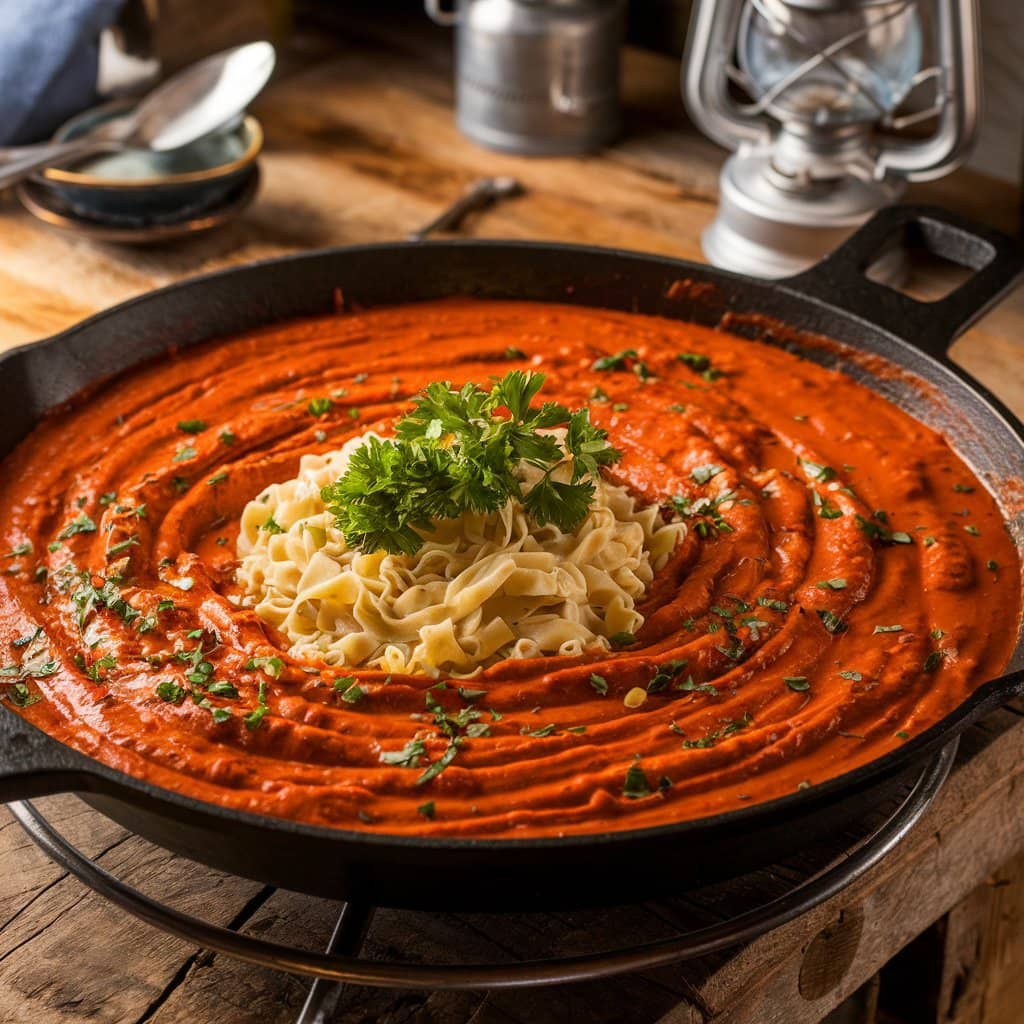Paprikash sauce is a rich, flavorful sauce originating from Hungarian cuisine. It is known for its signature red color, creamy texture, and smoky-sweet taste. Central to its flavor profile is paprika, a spice derived from dried peppers. This comforting sauce is commonly paired with chicken (Chicken Paprikash), though other proteins or vegetables can be used. It’s a versatile dish perfect for cozy dinners and hearty meals.
Table of contents
What Is Paprikash Sauce Made Of? Origins and Culinary Significance
Historical Background
Paprikash sauce traces its roots to Hungary, where paprika became a culinary staple in the 16th century after being introduced by the Ottoman Turks. The dish evolved as Hungarian cooks began using paprika extensively, creating a sauce that became synonymous with comfort food. “Paprikás” in Hungarian directly refers to dishes seasoned with paprika, highlighting its central role.
Cultural Significance
Paprikash sauce is more than just a recipe; it’s a symbol of Hungarian culinary heritage. It is celebrated at food festivals and featured in traditional family gatherings. While Chicken Paprikash (Csirkepaprikás) is the most famous version, the sauce is also used in stews, soups, and vegetarian dishes across Central Europe. Its popularity has expanded globally, appearing on restaurant menus and in home kitchens worldwide.
What Is Paprikash Sauce Made Of? Key Ingredients You Need
What Is Paprikash Sauce Made Of? Paprika as the Main Ingredient
Paprika is the defining ingredient of paprikash sauce, providing its characteristic red hue and smoky, sweet flavor. Hungarian paprika comes in various types, including sweet, hot, and smoked varieties. Traditional recipes use sweet paprika for a mild, flavorful sauce, but some cooks blend it with hot paprika for extra heat.
Protein Choices
While chicken is the classic choice for paprikash, other proteins like pork, beef, or even tofu work well. Chicken thighs or drumsticks are popular because they stay tender and flavorful during cooking. Vegetarians can substitute mushrooms or chickpeas for a plant-based version.
What Is Paprikash Sauce Made Of? How Onions and Garlic Add Flavor
Onions form the flavor base of paprikash sauce, adding sweetness and depth. They are typically sautéed until golden brown to bring out their natural sweetness. Garlic, though less traditional, is commonly added for extra aromatic complexity.
Broth: Enhancing the Base
A rich broth, usually chicken or vegetable stock, serves as the liquid base of paprikash sauce. It helps balance the richness of the other ingredients while deepening the sauce’s savory flavor.
What Is Paprikash Sauce Made Of? Dairy Ingredients for a Creamy Texture
What Is Paprikash Sauce Made Of? Sour Cream or Heavy Cream Choice
The creamy texture of paprikash sauce is one of its defining features, making it irresistibly rich and comforting. Traditional Hungarian recipes rely on sour cream, known for its tangy, slightly acidic flavor. This not only balances the smoky sweetness of the paprika but also adds a smooth, velvety consistency.
Sour cream should be added carefully to avoid curdling. It’s best to let the sour cream come to room temperature before stirring it into the sauce. Many cooks mix it with a small amount of flour to stabilize the mixture, ensuring a smooth, lump-free texture. Another trick is to turn off the heat before adding sour cream, reducing the risk of splitting.
Modern variations sometimes use heavy cream instead of sour cream for a richer, more indulgent sauce. Heavy cream lacks the tangy flavor but delivers a luxuriously smooth consistency. Some chefs even blend both sour cream and heavy cream to balance creaminess and tanginess for a well-rounded taste.
Best Practices for Using Dairy in Paprikash Sauce
- Choose Full-Fat Sour Cream: Low-fat versions can be more prone to curdling.
- Blend Before Adding: Mix sour cream with a small amount of sauce first to create a smooth blend.
- Avoid Boiling After Adding Dairy: Keep the sauce at a low simmer or off the heat when incorporating sour cream or heavy cream.
Dairy-Free Alternatives
For those following a dairy-free diet or seeking vegan adaptations, several alternatives can replicate the creamy texture of paprikash sauce without compromising on flavor:
- Coconut Milk: Coconut milk offers a luscious creaminess while maintaining a mild sweetness. For a more neutral flavor, use unsweetened coconut cream. Although it adds a slightly tropical note, the smoky paprika balances it well.
- Cashew Cream: Blended soaked cashews create a rich, creamy base that mimics sour cream. To make cashew cream, soak cashews for a few hours, then blend with water, lemon juice, and a pinch of salt for tanginess. This option is popular among vegans and those with dairy allergies.
- Plant-Based Sour Cream: Many grocery stores now offer dairy-free sour creams made from ingredients like almonds, soy, or oats. These are excellent one-to-one substitutes for traditional sour cream, providing similar tanginess and texture.
- Silken Tofu: Blended silken tofu creates a creamy, protein-rich base. Add lemon juice or apple cider vinegar for tanginess to resemble the taste of sour cream.
- Oat or Almond Cream: Oat or almond-based creams offer a neutral taste with a smooth consistency. They work well in paprikash sauce, especially when thickened with cornstarch or arrowroot powder.
How to Choose the Best Dairy-Free Alternative
- For Creaminess: Use cashew cream or coconut milk.
- For Tanginess: Try plant-based sour cream or blend tofu with lemon juice.
- For Convenience: Store-bought vegan sour cream is quick and reliable.
By incorporating these traditional and modern ingredients, paprikash sauce can be tailored to fit various dietary preferences while keeping its signature creamy texture and rich flavor intact. This flexibility has made it a beloved dish worldwide, cherished by both traditionalists and culinary innovators alike.
What Is Paprikash Sauce Made Of? Essential Spices and Seasonings
Salt and Pepper
Essential spices like seasoning salt and ground peppercorns enhance the natural flavors in paprikash sauce. Seasoning salt boosts the sweetness of caramelized onions while intensifying the smoky and savory undertones of paprika. Adding it gradually during the cooking process ensures balanced seasoning and prevents the dish from becoming overly salty.
Black pepper introduces a mild spiciness that complements the smoky-sweet paprika without overpowering it. For a more robust flavor, freshly ground pepper is recommended. Some chefs also incorporate white pepper for a subtler heat that blends seamlessly into the creamy sauce.
Tips for Using Salt and Pepper in Paprikash Sauce:
- Use sea salt or kosher salt for a cleaner taste.
- Add black pepper during the simmering stage for maximum infusion.
- Adjust seasoning just before serving to achieve perfect balance.
Additional Herbs and Spices
While paprika is the star ingredient, additional herbs and spices elevate the complexity of paprikash sauce. These ingredients enhance its depth, aroma, and appearance:
Parsley:
Fresh parsley is the most common garnish, adding a bright, herbaceous note that balances the sauce’s richness. Chopped parsley sprinkled on top just before serving creates visual appeal and a fresh burst of flavor.
Dill:
Dill adds a subtle, grassy freshness that complements the smoky-sweet paprika. It is often used in Hungarian cuisine and pairs well with creamy sauces. A small amount can be stirred in at the end or used as a garnish.
Bay Leaves:
Bay leaves are frequently added during the simmering process, infusing the sauce with a slightly woodsy, herbal undertone. Removing them before serving is essential to avoid bitterness.
Thyme:
Thyme brings an earthy depth to paprikash sauce. Its robust, slightly minty flavor enhances the sauce’s complexity, making it a popular addition in modern variations. Add thyme sprigs while the sauce simmers and discard them before serving.
Caraway Seeds:
Caraway seeds are sometimes added for a nutty, anise-like flavor. A small pinch can add an interesting twist, though this is more common in regional variations of the dish.
Smoked Paprika:
Add smoked paprika alongside sweet paprika for a more intense, smoky flavor profile. This amplifies the sauce’s depth and is especially useful when making vegan or vegetarian versions of paprikash sauce.
Hot Paprika or Red Pepper Flakes:
To add heat, chefs sometimes mix in hot paprika or red pepper flakes. This creates a spicier version for those who enjoy a bit of a kick.
Best Practices for Seasoning Paprikash Sauce:
- Layer Flavors: Add herbs and spices at different cooking stages for complexity.
- Taste Continuously: Adjust seasonings throughout cooking to avoid under- or over-seasoning.
- Balance the Heat: Use sweet and hot paprika to control the spiciness level.
- Enhance the Finish: Always garnish with fresh herbs for a bright, fresh finish.
By skillfully combining these herbs and spices, paprikash sauce becomes a harmonious blend of smoky, sweet, savory, and earthy flavors, making it a beloved classic in Hungarian cuisine and beyond.
How to Cook Paprikash Sauce: Ingredients and Method Explained
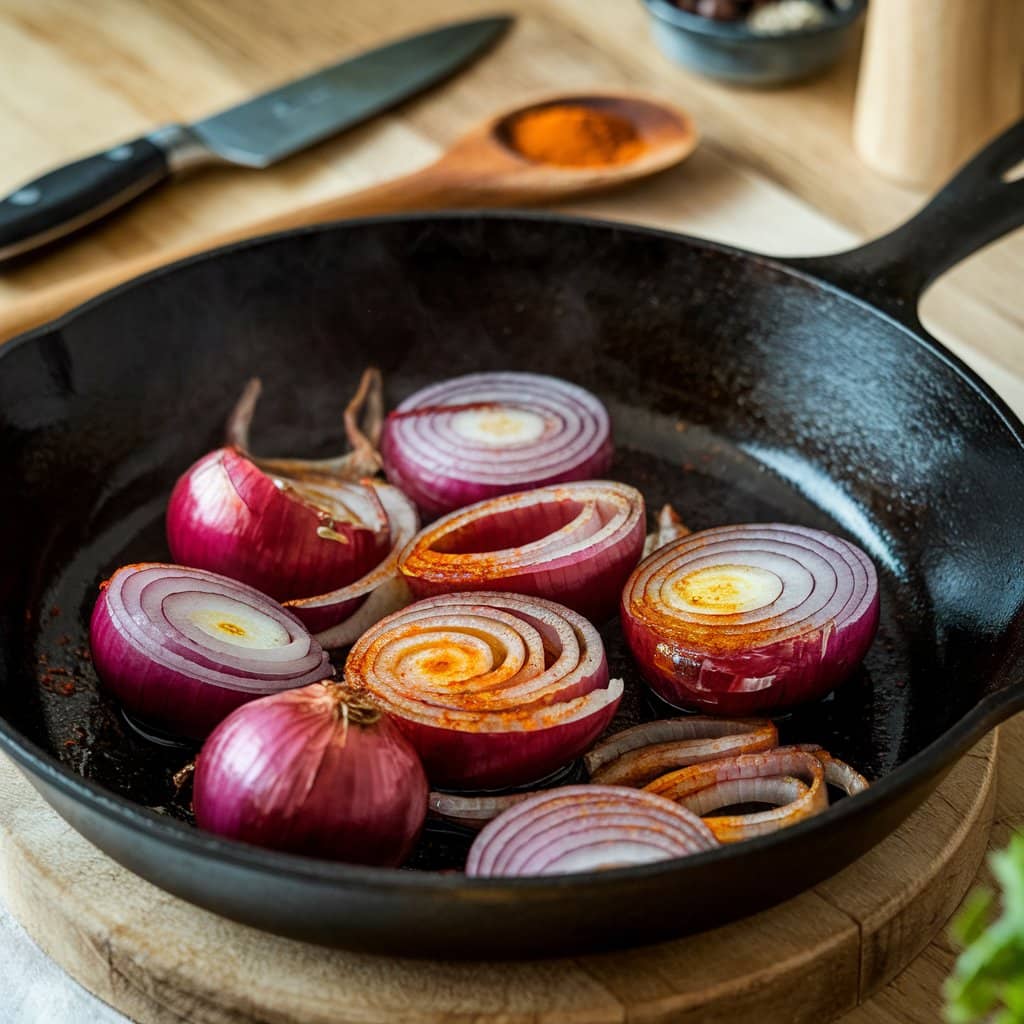
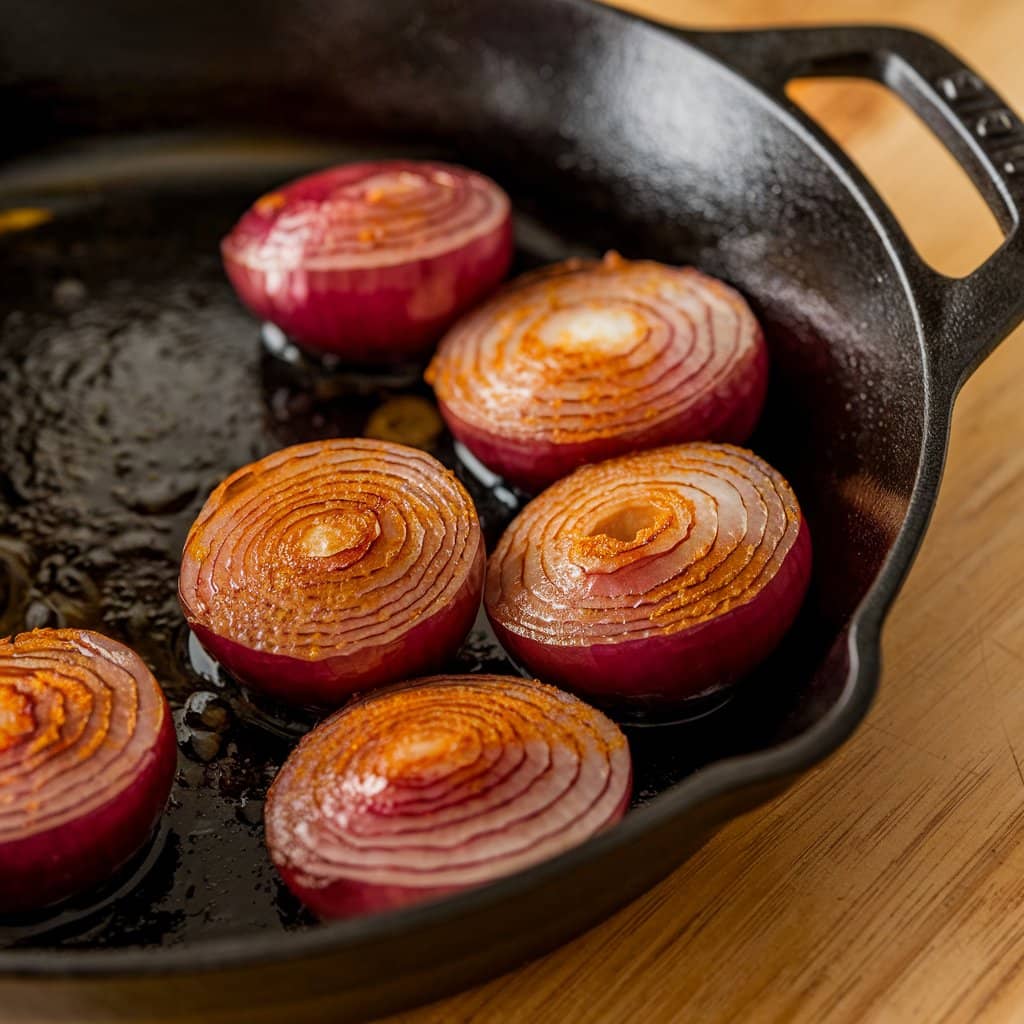
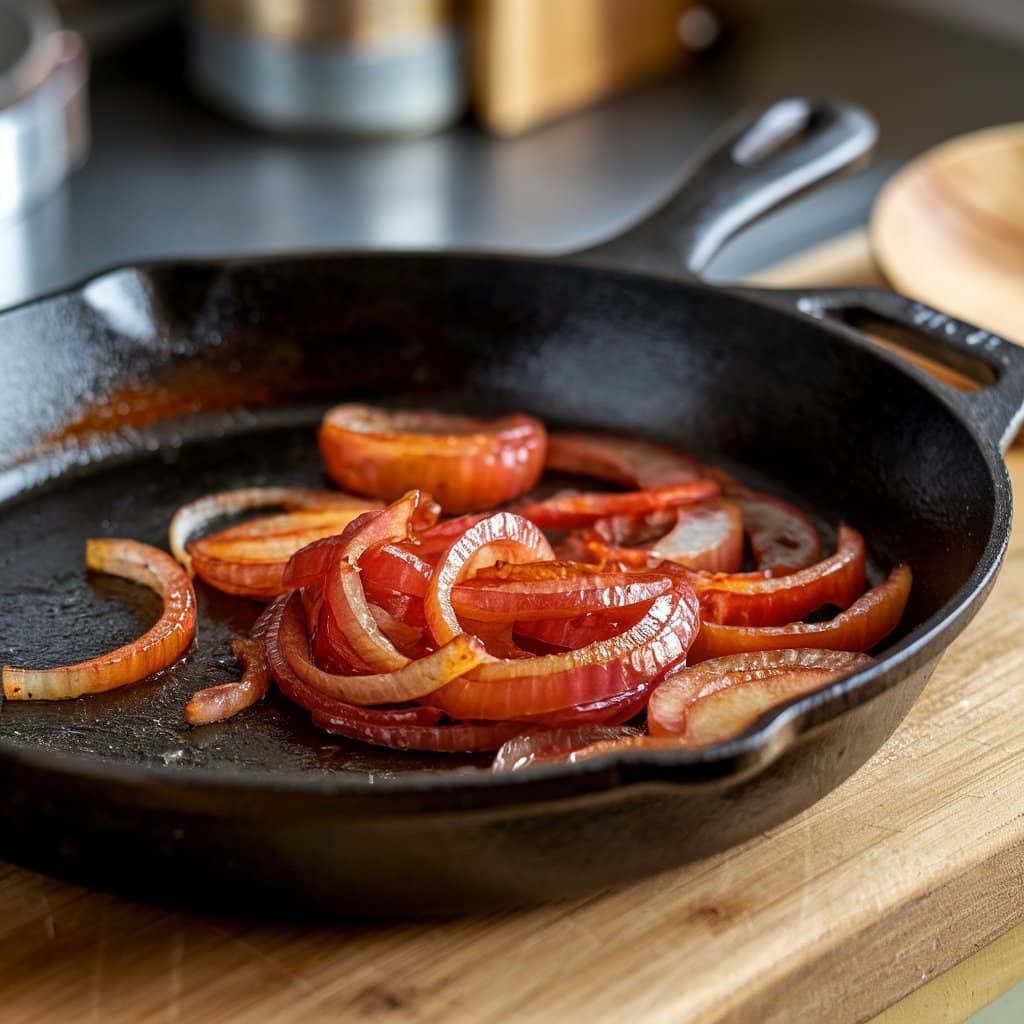
Preparation Steps
- Sauté the Onions: Start by sautéing finely chopped onions in oil or butter until golden brown.
- Add Paprika and Garlic: Stir in paprika and minced garlic, ensuring the paprika doesn’t burn.
- Cook the Protein: Add chicken or other protein and sear until browned.
- Simmer with Broth: Pour in broth, cover, and simmer until the meat is tender.
Simmering for Flavor Fusion
The key to a perfect paprikash sauce is slow simmering. Allowing the sauce to cook gently ensures the flavors meld together, creating a deep, savory taste. Adding sour cream at the end preserves its creaminess while preventing curdling.
What Is Paprikash Sauce Made Of? Popular Ingredient Variations
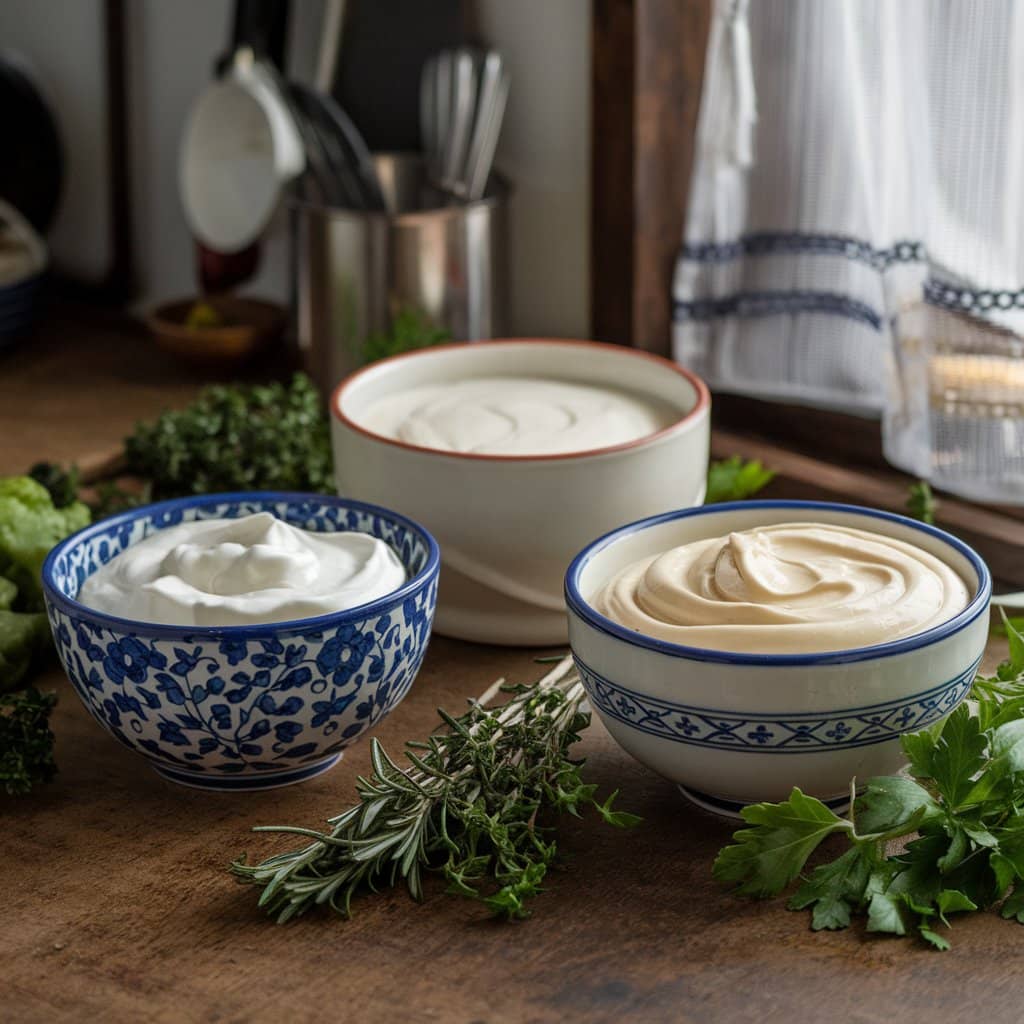
Vegetarian Paprikash
Vegetarian paprikash replaces meat with hearty vegetables like bell peppers, mushrooms, or potatoes. These ingredients absorb the smoky paprika flavor while adding unique textures. Some recipes also include beans or lentils for added protein, making the dish a filling, plant-based meal.
Vegan Adaptations
Vegan paprikash swaps dairy products with plant-based alternatives such as coconut milk or cashew cream. The use of smoked paprika intensifies the flavor, compensating for the richness typically provided by sour cream. Vegan butter or olive oil can replace traditional cooking fats.
International Twists
Cooks around the world have adapted paprikash to fit local tastes. In the United States, many people serve it with mashed potatoes or rice instead of traditional egg noodles. Some chefs incorporate smoked sausage, adding a robust, smoky element to the dish. In fusion cuisines, paprikash-inspired sauces appear in pasta bakes and even on pizza.
What Is Paprikash Sauce Made Of? Best Serving Suggestions
Classic Pairings
Traditional Hungarian cuisine features several timeless pairings that complement the rich, smoky, and creamy flavor of paprikash sauce. These classic sides enhance the overall dining experience by balancing the sauce’s richness with simple, hearty accompaniments.
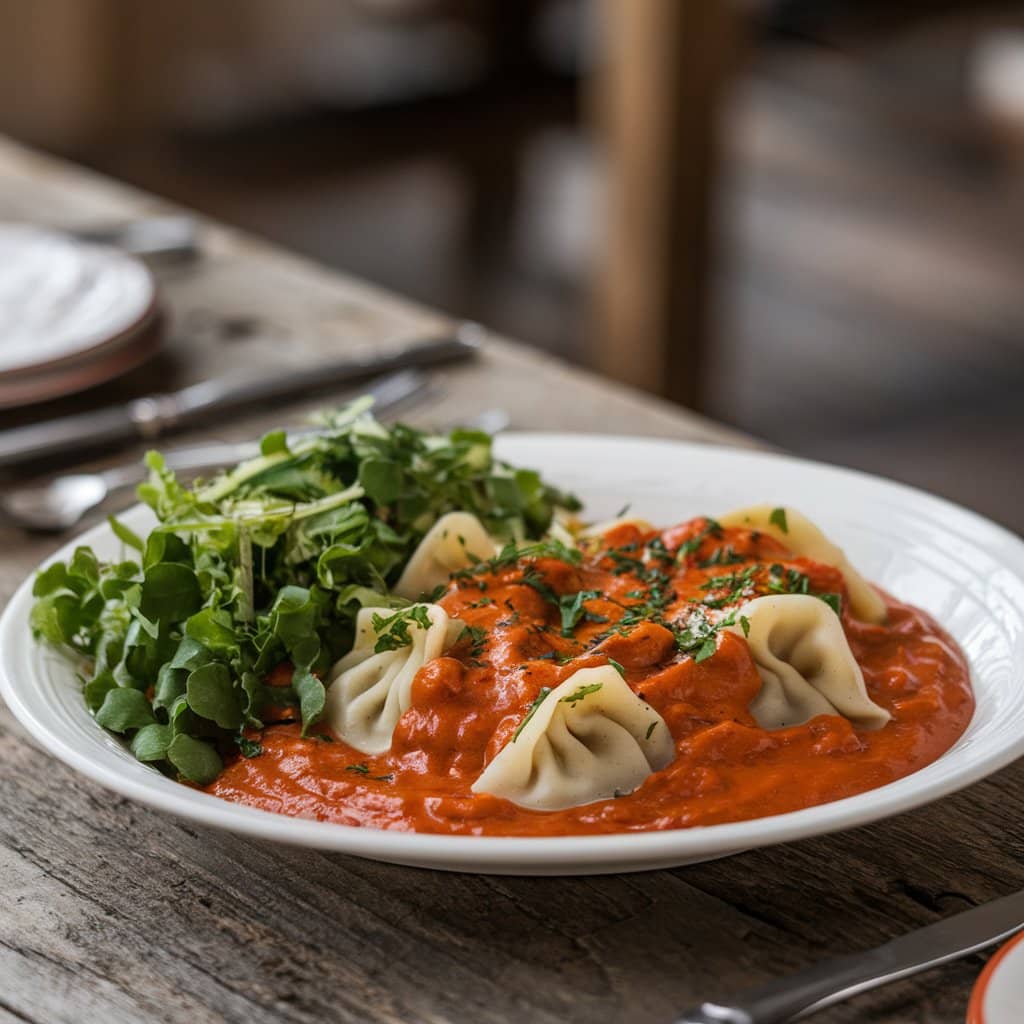
1. Nokedli (Hungarian Dumplings)
The most iconic pairing for paprikash sauce is nokedli, small, soft dumplings similar to German spaetzle. Made from a simple dough of flour, eggs, and water, these dumplings have a tender, chewy texture that soaks up the sauce beautifully. Chefs often serve nokedli freshly boiled with a sprinkle of parsley or butter for added flavor.
2. Boiled Potatoes
Simple boiled potatoes are another traditional side, offering a neutral base that balances the intense flavors of the sauce. Their soft, starchy texture absorbs the sauce’s creaminess, creating a hearty and satisfying meal.
3. Rice
Fluffy white or brown rice is a common pairing, providing a mild backdrop that allows the sauce’s complex flavors to shine. The grains soak up the sauce, making sure every drop is enjoyed.
4. Crusty Bread
Freshly baked crusty bread or traditional Hungarian loaves like kenyér are excellent choices for soaking up the sauce. A thick slice of rustic bread dipped into paprikash sauce makes for a satisfying meal on its own.
5. Egg Noodles
Wide egg noodles, cooked al dente, are a popular alternative to nokedli. Their broad surface catches the creamy sauce, making every bite flavorful and filling.
Modern Serving Ideas
Paprikash sauce is incredibly versatile, making it suitable for a range of modern culinary applications. Here are some creative ways to serve it:
1. Over Pasta
For an easy weeknight meal, serve paprikash sauce over pasta varieties like fettuccine, pappardelle, or rigatoni. The long, wide noodles hold the sauce well, providing a comforting and satisfying dish.
2. Polenta or Mashed Potatoes
Creamy polenta or buttery mashed potatoes create a luxurious base for paprikash sauce. These sides add extra richness and complement the sauce’s creamy consistency.
3. Zoodles (Zucchini Noodles)
For a low-carb alternative, try serving paprikash sauce over zucchini noodles (zoodles) or spaghetti squash. These veggie-based noodles provide a lighter option while still capturing the sauce’s bold flavor.
4. Quinoa or Couscous
For a nutritious, protein-packed meal, serve paprikash sauce with quinoa or couscous. These grain-like sides absorb the sauce well while adding a slightly nutty undertone.
5. Baked Potatoes
Transform baked potatoes into a satisfying meal by splitting them open and topping them with paprikash sauce. Add a dollop of sour cream and a sprinkle of fresh herbs for extra indulgence.
6. Savory Crepes or Pastries
You can also use paprikash sauce as a filling for savory crepes or puff pastries. Add cooked meat or vegetables along with the sauce for an elegant twist on a classic dish.
7. Stuffed Bell Peppers
Stuff bell peppers with a mixture of rice, vegetables, and paprikash sauce, then bake until tender. This dish combines smoky, savory, and sweet flavors in a wholesome, satisfying way.
Serving Tips for the Best Experience
- Garnish Generously: Add freshly chopped parsley, dill, or a dollop of sour cream before serving to brighten the dish.
- Serve Warm: Paprikash sauce tastes best when served warm and freshly prepared. Reheat gently to maintain its creamy texture.
- Mix and Match: Experiment with different sides to find your favorite combination, blending tradition with modern culinary creativity.
Paprikash sauce is a flavorful and versatile dish that pairs well with both classic dumplings and modern low-carb sides, making it adaptable to various tastes and dietary preferences.Its timeless appeal continues to inspire delicious culinary creations worldwide.
Health and Nutritional Value
Caloric Content
The caloric value of paprikash sauce varies based on its ingredients. A traditional recipe with chicken, sour cream, and noodles can be calorie-dense. Choosing lean proteins like skinless chicken breast and low-fat dairy can reduce the calorie count without sacrificing flavor.
Nutritional Benefits
Paprika, the star ingredient, is rich in vitamins A, E, and C, promoting healthy skin and boosting immunity. Onions and garlic are natural antioxidants that support heart health. Adding vegetables like bell peppers or spinach increases the dish’s fiber content. Choosing healthier sides like quinoa or whole-grain noodles can make paprikash a more balanced meal.
Tips for Perfecting Paprikash Sauce
Cooking Tips
- Use Fresh Paprika: Ensure your paprika is fresh, as its flavor diminishes over time. Use Hungarian sweet paprika for authenticity and depth.
- Don’t Rush the Onions: Properly caramelized onions form the flavorful base of the sauce. Take your time to cook them until golden brown.
- Avoid Curdling: To prevent the sour cream from curdling, let it reach room temperature before adding it to the sauce. Stir it in gradually off the heat.
- Simmer, Don’t Boil: Slow simmering allows the sauce to thicken while blending all the flavors. Boiling can make the meat tough and break down the sauce.
Common Mistakes to Avoid
- Burning the Paprika: Paprika burns quickly, turning bitter. Add it after removing the pan from the heat briefly to avoid scorching.
- Skipping the Broth: Using water instead of broth results in a less flavorful sauce. Opt for chicken or vegetable stock for added richness.
- Overcrowding the Pan: Cooking too much meat at once can prevent proper browning. Sear the protein in batches if necessary.
Frequently Asked Questions (FAQs)
Is Paprikash Sauce Spicy?
Traditional paprikash sauce is mildly spicy if made with sweet paprika. To add more heat, blend in hot or smoked paprika based on your taste preferences.
Can You Make Paprikash Sauce in Advance?
Yes, paprikash sauce tastes even better the next day as the flavors deepen. Store it in an airtight container in the refrigerator for up to three days. Reheat gently over low heat to maintain its creamy texture.
How Long Does It Last in the Fridge?
You can refrigerate paprikash sauce for up to three days.. If you’ve used dairy-based ingredients, avoid freezing, as they may separate upon thawing.
What Can I Substitute for Sour Cream?
Greek yogurt, crème fraîche, or plant-based sour cream are great substitutes. Adjust the tanginess by adding a splash of lemon juice if needed.
Is Paprikash Gluten-Free?
Yes, paprikash sauce is naturally gluten-free if prepared without flour. For thickening, use gluten-free flour or cornstarch.
What Side Dishes Go Well with Paprikash Sauce?
Traditional sides include egg noodles, dumplings, rice, or mashed potatoes. For a modern twist, try quinoa, roasted vegetables, or cauliflower mash.
Conclusion
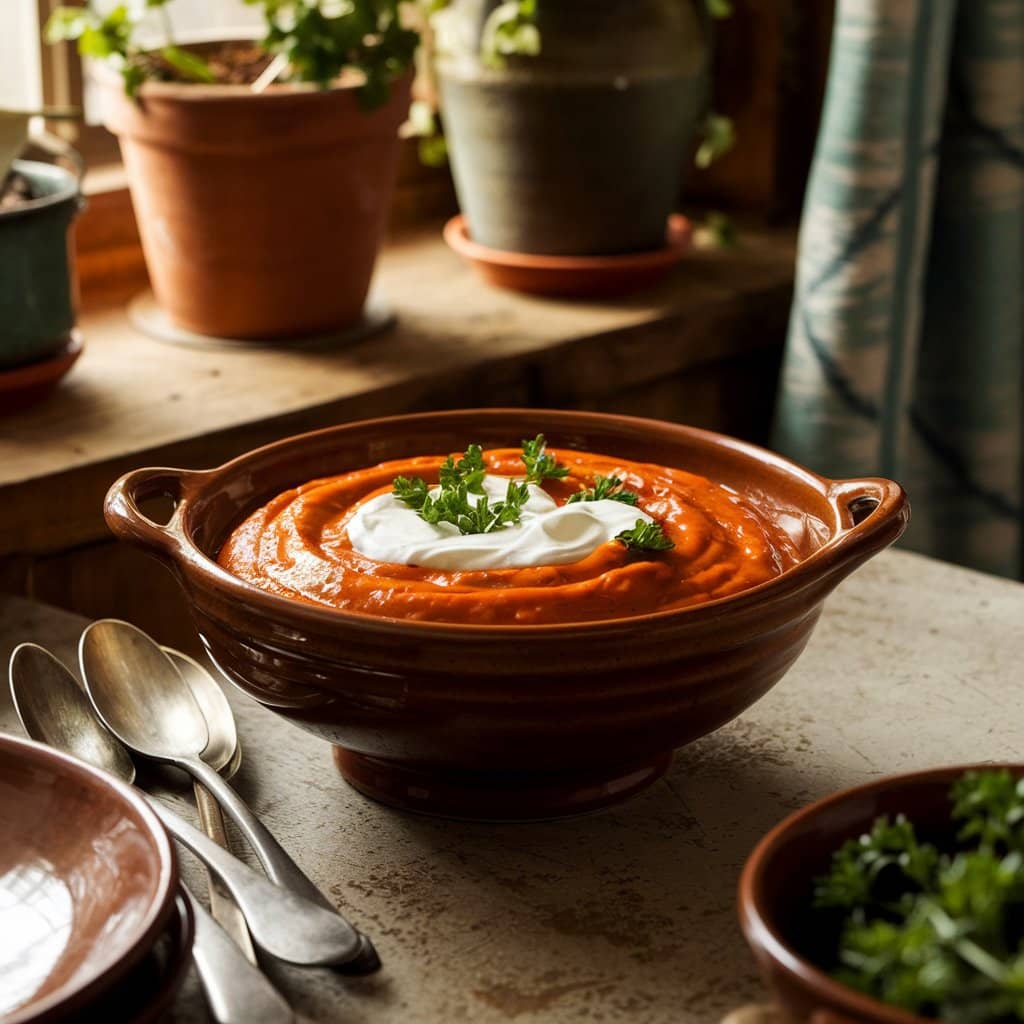
Paprikash sauce is a flavorful, comforting dish rooted in Hungarian culinary tradition. Its perfect balance of smoky paprika, creamy texture, and savory ingredients makes it a versatile favorite. With the right ingredients and techniques, you can master this classic sauce and customize it to suit your taste and dietary preferences. Whether served over noodles or enjoyed as a hearty stew, paprikash sauce is a timeless recipe that continues to delight food lovers around

